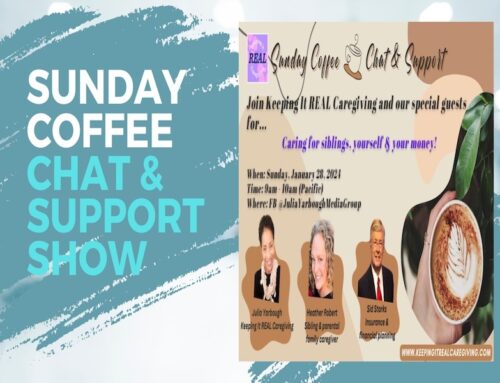Help first responders help us

If you have been following recent news you know the Pacific Northwest has been enduring uncomfortable, dangerous and in many cases DEADLY hot temperatures.
Your correspondent and Keeping it REAL Caregiving is based in Northern California. Temperatures the past several weeks have lingered in the upper 90’s into the triple-digits and a number of wildfires have also been burning in the state.
Those of us who call ‘The Golden State’ home have come to expect, anticipate and prepare for such realities.
How could we not? The memory of the Camp Fire is still fresh in the minds of many. That November, 2018 early morning fire ripped its way through the Butte County town of Paradise, leaving 85 dead. Many of those killed were elders.
So what do high temperatures and wildfire risks have to do with caregiving? It turns out they have more in common than you might think.
Plan & Prepare
In the same way first responders urge all of us to plan & prepare for natural emergencies such as fire, if you are a caregiver to an elder you should put emergency plans in place before a crisis hits. It is what I call the ‘help us help you’ approach.

Capt. John Gaddie; Cal Fire Butte County
I reached out to several fire experts to talk about why planning and preparing is so important.
“In a 9-1-1 situation we’re the first resource,” explains Cal Fire Butte County Fire Captain John Gaddie. “We ask a caregiver or a homeowner who is caring for someone else to be prepared with their medications. How much do they take? How have they been acting recently? Keep notes or journals about your loved one so the more information we have the more we can treat those signs and symptoms when we arrive on scene.”
Are you ready?
I’ll share a recent incident which is a perfect example. One of my friends who has nine decades of life experiences under their belt, suffered some serious medical issues. I happened to be at their home visiting them and their family when it became clear an emergency situation was unfolding. The family called 9-1-1. Despite the seriousness of the moment the family and at least one hired caregiver who was on hand asked me to stay.

Courtesy: Adobe Stock
When paramedics arrived, the first thing those professionals wanted to know was the condition of the patient. They asked what symptoms were present, what medications (if any) were being taken and any additional information about current benchmarks of health and condition.
During those crucial moments when every second counts, there was confusion. The family members did not know the answers to the questions and the patient was in no condition to offer paramedics much guidance.
The emergency response team also asked about prior hospital visits. They asked if the patient had a DNR or a POLST? Again, those on hand did not have the answers.
If this is the first time you are hearing about DNR and POLST you’re not alone. We’ll explore the Do-not-resuscitate order and the Physician Orders for Life-Sustaining Treatment in future articles.
You can listen to my podcast for a brief overview of what these forms are and why they are important.
At the scene
The EMT’s worked quickly to get their patient stabilized and loaded into the rescue vehicle for a trip to the ER.
I’m happy to say that despite those tense and frightening moments, several days in the hospital then several weeks of rehabilitation in a facility and my 90-something friend is doing ‘okay.’ However, the incident has set them back emotionally and physically.
Watching that scenario made me realize how many other families might encounter similar situations and the reality is – many may not be ready.
“Sometimes people are prepared,” explained Captain Gaddie. “We’re not doctors, so we treat signs and symptoms. We can’t diagnose. So the more information you can get to us about your loved one and what he or she may have, what they’ve been diagnosed with or their medications; that helps us treat the patient when we arrive on scene.”
Captain Gaddie suggests taking the time to reach out to your local fire department leaders and introducing yourself and your elder to the crew; create a personal connection before you need help.
Those who might be called to assist you or your elder will already have some sense of the particulars of your situation.
Captain Gaddie says depending on the department, you can also ask to have personal information loaded into the Computer Aided Dispatch (CAD) System. Each department is different so be sure to contact your local offices to learn more – be sure to watch a short video to hear from local emergency responders.
Turning to tech
Some departments are increasingly turning to technology to achieve faster results during responses. However we still must also take steps to ensure our own safety.

Chico Fire Department
For instance, the City of Chico Fire Department has added a program called ‘Community Connect’ to its arsenal of emergency response tools. Those who live in the city can visit the department’s website, sign up and input as much personal information as they wish. Information is loaded into the dispatch system so crews know in advance who may need additional assistance at any given address.
I asked Chico Fire Department Battalion Chief Jim Lucanic how helpful such a tool is, especially when addressing the needs of our elders and their caregivers.
“We encourage anyone to go in and sign up,” said Battalion Chief Lucanic. “Even care facilities can use this. We might learn that someone is non-ambulatory, that there is oxygen in the room, they can’t move on their own or they are in a wheelchair. A tool like this is absolutely helpful with an aging population.”
The department launched the program at the tail end of 2020. As of the start of July, 2021 only 135 people have registered.
And for those who are not tech-savvy or who have limited internet connectivity? There are options to go ‘old-school.’
In cases of a major emergency requiring evacuations, response teams are able to know in advance which individuals might need additional help.

Butte County offers help through SNAP – The Special Needs Awareness Program. If you live in the county and believe you might need additional help, you can pre-register and submit any special needs information for those in your household.
To submit a request or call the Butte County Adult Services Intake line: 1.530.538.7538 and press #2 or call our toll free number 1.855.398.8899. (Courtesy Butte County.Net)
According to the Butte County website, SNAP is ‘part of Butte County’s Emergency Evacuation Plan… ‘to ensure that those in need of evacuation assistance during an emergency are identified and evacuated safely and efficiently.’
“It is another level of an alert system to assist people in their homes and also to help the emergency personnel and law enforcement members by providing information on those who have accessibility or functional needs in the event of an evacuation,” explains Tiffany Rowe, the Assistant Director of Butte County Adult Services.
A SNAP packet is filled with preparedness information. It also comes with a bright yellow placard you can put in the window of your home. It alerts first responders someone inside needs additional help.
There is also information from The California Department of Aging, offering guidance on how to prepare, specifically for unique needs of elders.
As family caregivers we are busy and typically have ZERO free time to go hunting for additional resources. I get it!
But I encourage you to take a few minutes to organize your information and have a plan in place. You and your loved one(s) will be glad you took steps now and your local first responders will be grateful you are helping them help you.
What personal safety and preparedness hacks have you put in place for your family? Perhaps some of your suggestions can help others.
Be sure to subscribe to the Keeping it REAL Caregiving newsletter and shoot me a note about your experiences; I’d love to hear from you!
Ciao~





Like our content? We invite you to leave a comment and say hello!